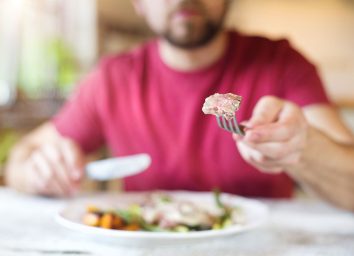8 Foods High in Potassium That Boost Total Health
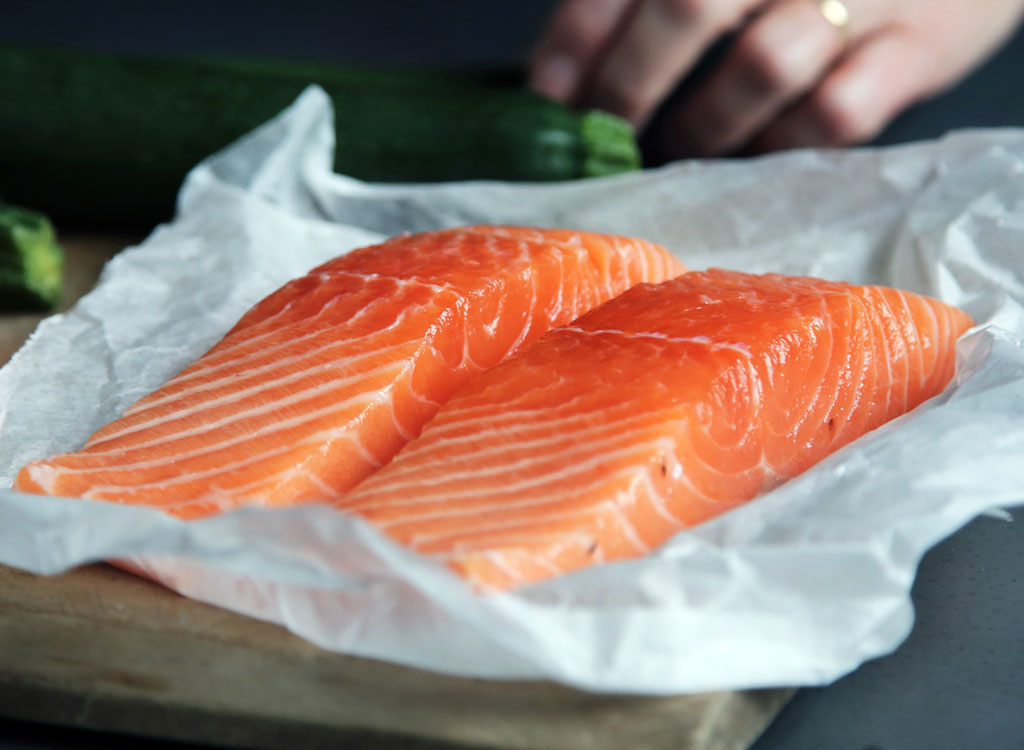
If you were to put together a list of foods high in potassium, you’d likely stop after bananas. The star, the lead, the one exposed to the most public notoriety: bananas are to potassium what Adam Levine is to Maroon 5.
That is to say, you’d probably be hard-pressed to name another contributor. But while knowledge of Levine’s bandmates will have little influence on your life, being savvy about the many dietary sources of potassium—beyond the banana—may save your life.
That’s because the mineral is crucial for the heart, kidneys, and other body organs to function normally—and most Americans don’t get enough. In fact, a recent study found only 0.3 percent of the population, or 3 in every 1,000 Americans, meet the current World Health Organization’s (WHO) recommendation of at least 3,510 milligrams of potassium daily. And the WHO’s recommendation is pretty conservative; The U.S. Federal Drug Administration (FDA) formally increased the recommended daily intake (RDI) of potassium to 4,700 milligrams, which is slated to appear on the new nutrition facts label in 2020.
Increasing your intake of potassium by consuming foods high in potassium will positively affect your health. In fact, a Journal of the American College of Cardiology study found that increasing your intake of potassium by 1,640 milligrams can decrease your risk of stroke by 21 percent. Since the average American consumes just 2,640 milligrams of potassium a day, an increase of this magnitude is quite significant—albeit it still would not reach the RDI.
The good news is you can boost your potassium intake without overloading on bananas by getting to know these unsung potassium stars. They not only boast more of the nutrient than a medium banana, but they also pack a number of other health benefits that boost total health. We’ve rounded up these foods high in potassium by using the USDA National Nutrient Database.
What These Foods High in Potassium Are Up Against:
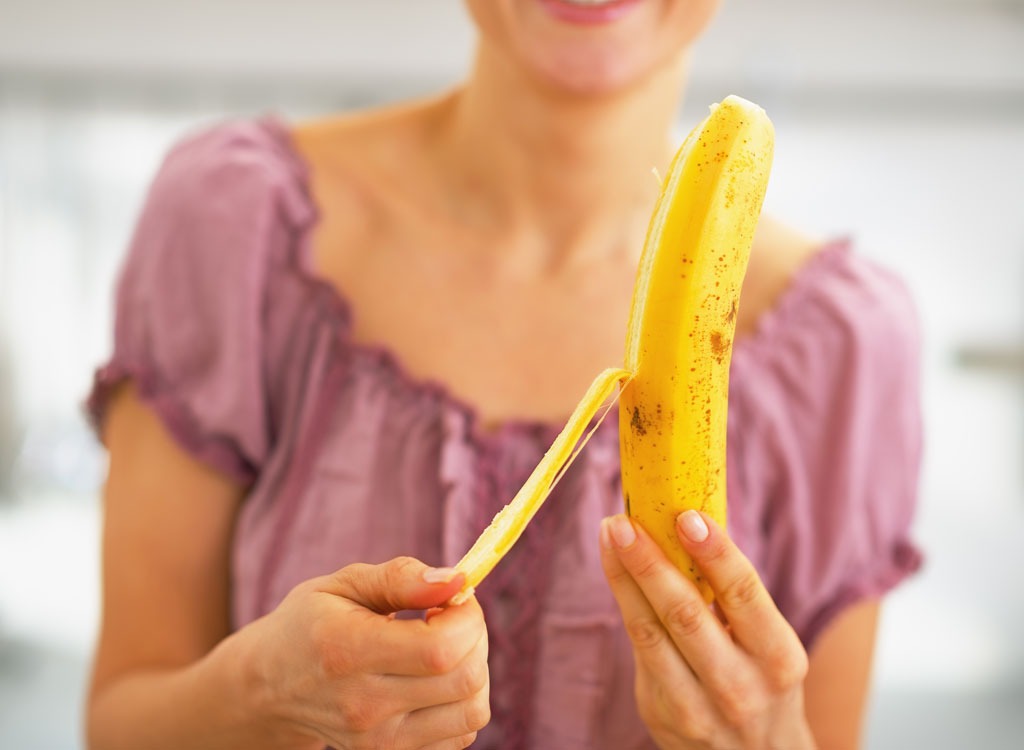
1 medium, 7-inch banana: 422 mg potassium, 8.8% DV
And Now… 8 Foods High in Potassium
Cooked Portabella Mushrooms
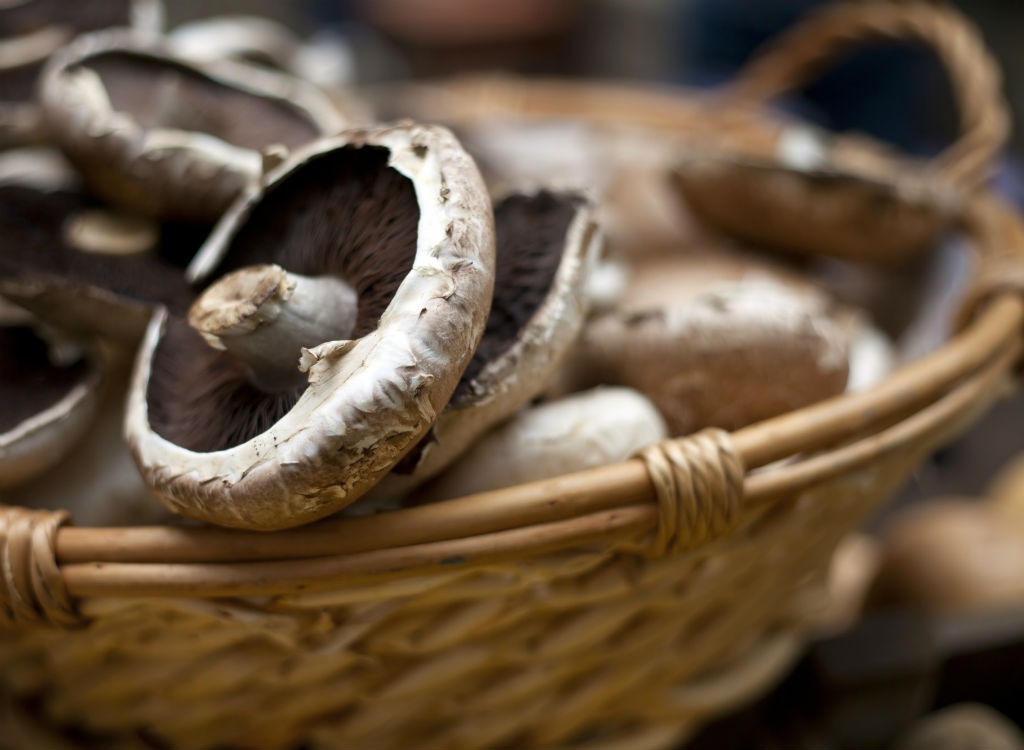
Potassium Payoff: 529 mg per 1 cup, sliced (11.3% DV)
The ancient Egyptians believed eating mushrooms brought long life, and today’s scientists now have proof: Mushrooms, as they’re particularly rich in vitamin D, are one of the best edible immune boosters on the planet. In fact, one study found eating mushrooms to be as effective as a supplement at increasing and maintaining levels of vitamin D — a nutrient that plays an integral role in modulating the immune system to help fight infections and disease. And researchers at the University of Florida showed increased immunity in people who ate 4 ounces of cooked mushrooms every day for four weeks.
Eat This! Tip: No need to splurge on exotic ‘shrooms. Although portobello mushrooms top the charts for potassium, the humble white button mushroom also serves up a healthy 428 milligrams of potassium and has as much, and in some cases, more antioxidant properties than more expensive varieties.
Cooked Spinach
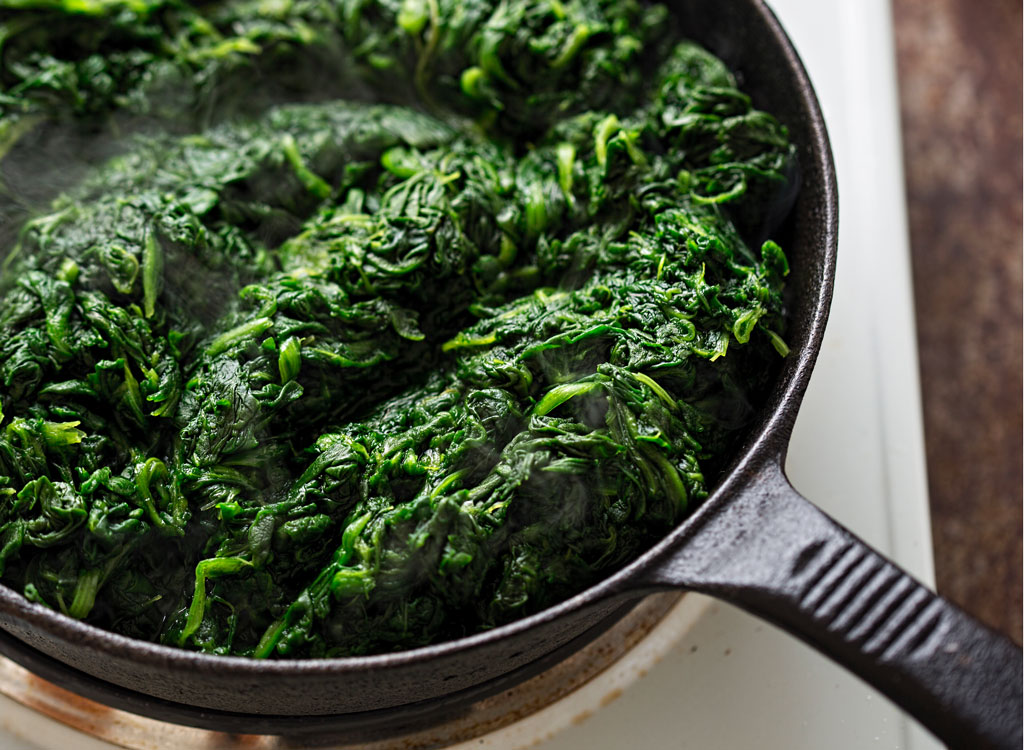
Potassium Payoff: 839 mg per 1 cup (17.9% DV)
Spinach is like that guy in high school who was the captain of every Varsity sport, the Homecoming King, the Prom King and the Valedictorian. Rich in muscle-building iron, detoxifying vitamin E, brain-boosting vitamin K and appetite-quashing compounds called thylakoids, the leafy green and its numerous health benefits are affirmed by study after study. The latest research suggests just one serving of spinach a day could fight off dementia, halting mental decline by an average of 11 years.
Eat This! Tip: It’s hard to eat too much spinach. Stock up on a few bags at the beginning of the week and challenge yourself to sneak it into every meal. We’d recommend opting for the fresh stuff over frozen. Cooking up a cup of frozen spinach will only fill you up with 574 milligrams of potassium—265 fewer milligrams than what you’d get by cooking down the fresh stuff.
Tomato Puree
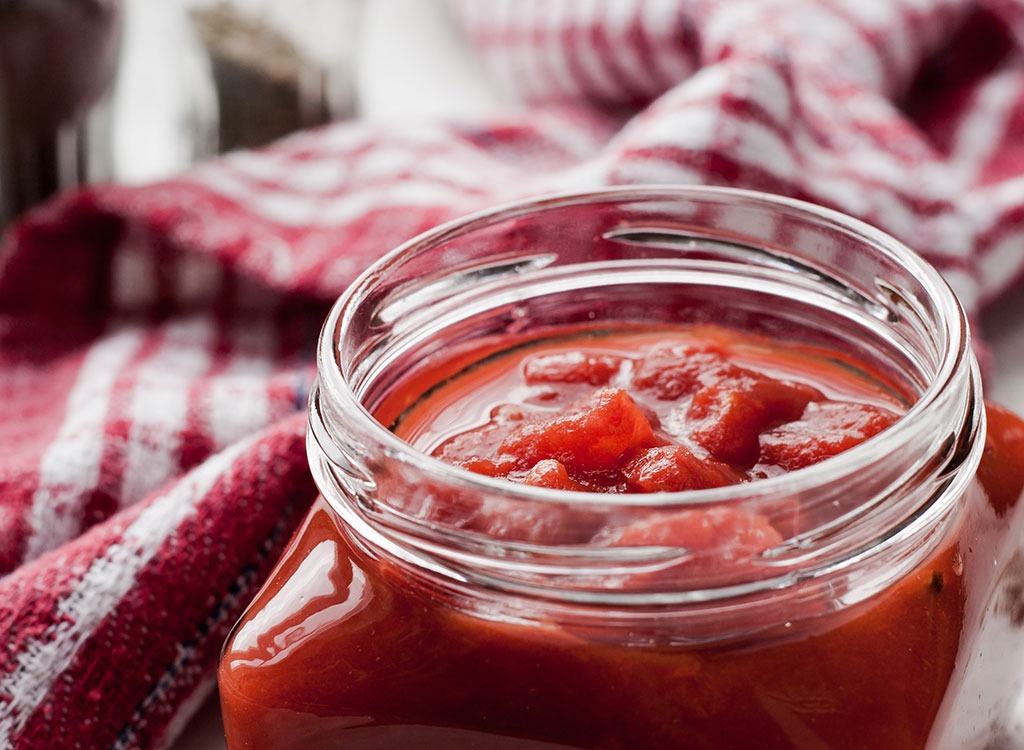
Potassium Payoff: 549 mg per ½ cup (11.7% DV)
Americans eat more tomatoes and tomato products than any other non-starchy “vegetable.” And that’s good news because researchers say cooked tomatoes are particularly rich in lycopene, a powerful antioxidant proven to lower risk of cardiovascular disease, skin damage and certain cancers. One study in the British Journal of Dermatology suggests the antioxidant-rich tomato may also be the ultimate skin-savvy food, providing anti-aging sun protection while boosting pro-collagen—a molecule that gives skin its taut, youthful structure. So, who wants extra marinara?
Eat This! Tip: Cooked or sun-dried tomatoes contain more bioavailable potassium and lycopene than fresh varieties. Look for store-bought brands without added salt or oil, and if you’re cooking your own, consider splurging on organic. Research suggests organic tomatoes may have higher levels of disease-fighting polyphenols and vitamin C than conventionally grown varieties.
Acorn Squash
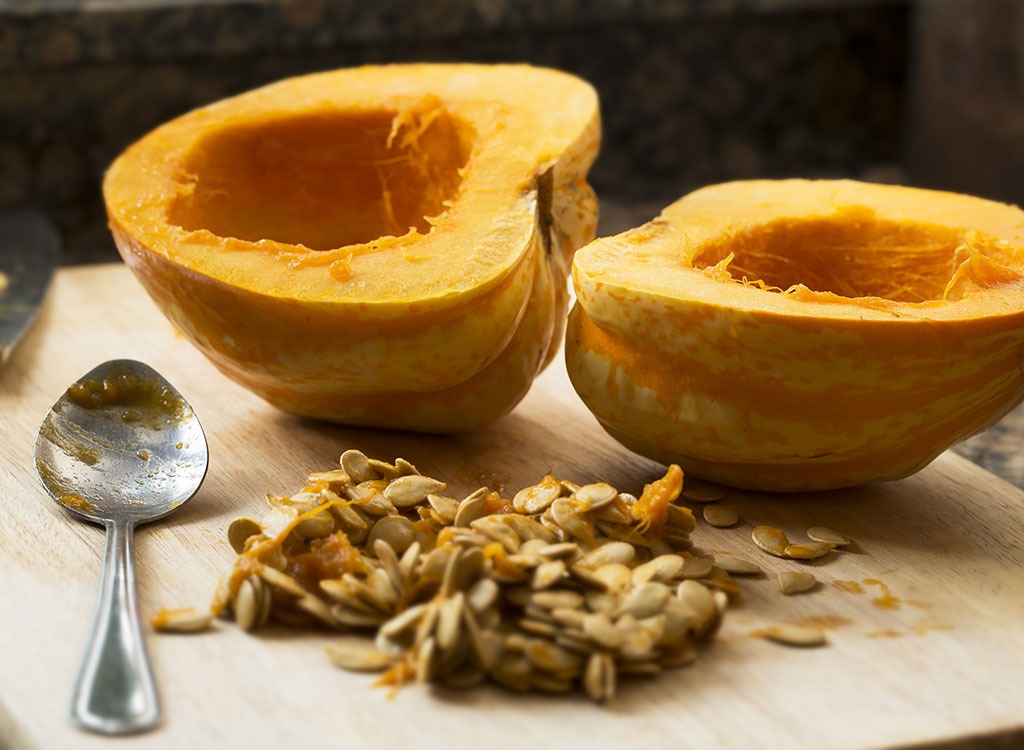
Potassium Payoff: 896 mg per 1 cup baked (19% DV)
Don’t let the name fool you; a regular serving of winter squash may help you keep year-round glowing skin. Eating a diet rich in richly colored vegetables gives a healthier, and more attractive, golden glow than the sun, a study in the Journal Evolution and Human Behaviour showed. This skin damage-free glow is the result of powerful compounds called carotenoids that give squash its orange color and may also lower the risk for Type 2 diabetes among people harboring a genetic predisposition, according to Stanford University School of Medicine researchers.
Eat This! Tip: There are numerous varieties of squash, each of which provide a healthy dose of potassium. Squash tastes best in its peak season, so let the “fresh test” be your guide, and choose whatever looks, smells and feels prime for picking at the market.
Baked Potato with Skin On
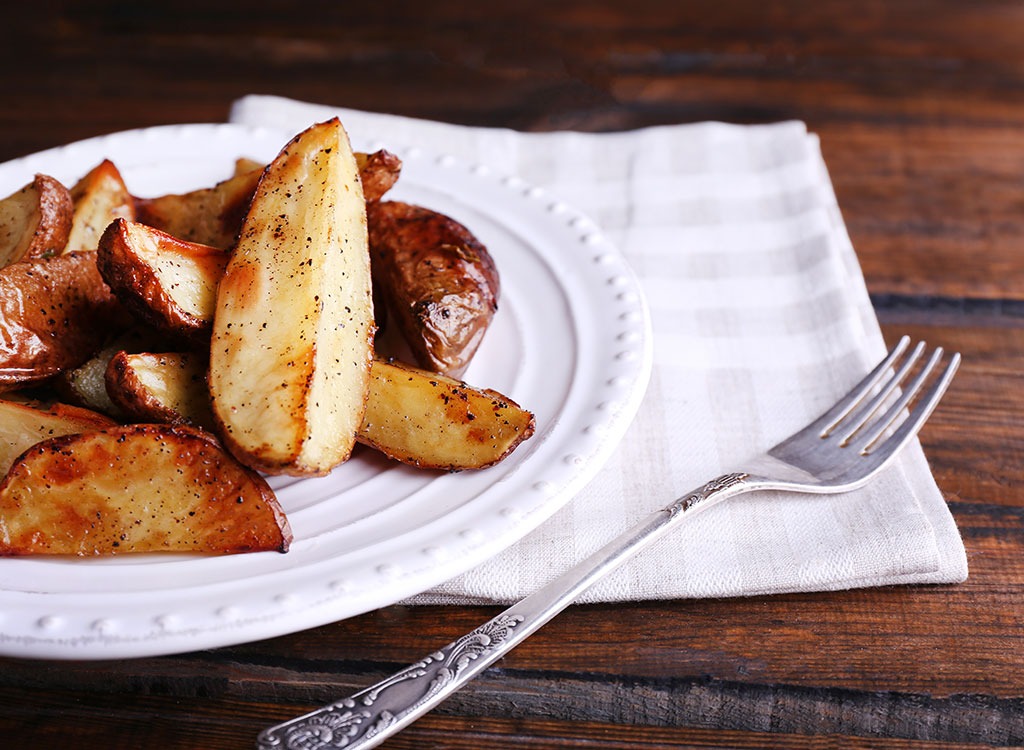
Potassium Payoff: 926 mg per 1 medium (19.7% DV)
Regularly upstaged by its sweeter sister, it’s easy to forget the health benefits of the humble white tater — which is a shame, because at 110 calories, the baked potato is one of the most affordable and satiating weight-loss foods on the planet. An Australian study that measured the satiating index of 38 popular foods showed that potatoes were more filling than notoriously “healthy” picks like brown rice and even Eat This, Not That! favorite, overnight oatmeal. And at no consequence to your waist, research suggests.
Eat This! Tip: We don’t recommend the all-potato diet, but a 2014 study found that just a couple servings of spuds a day reduces blood pressure almost as much as oatmeal without causing weight gain … providing you don’t turn your tater into a French fry, a chip, or smother it with butter and gravy.
Avocado
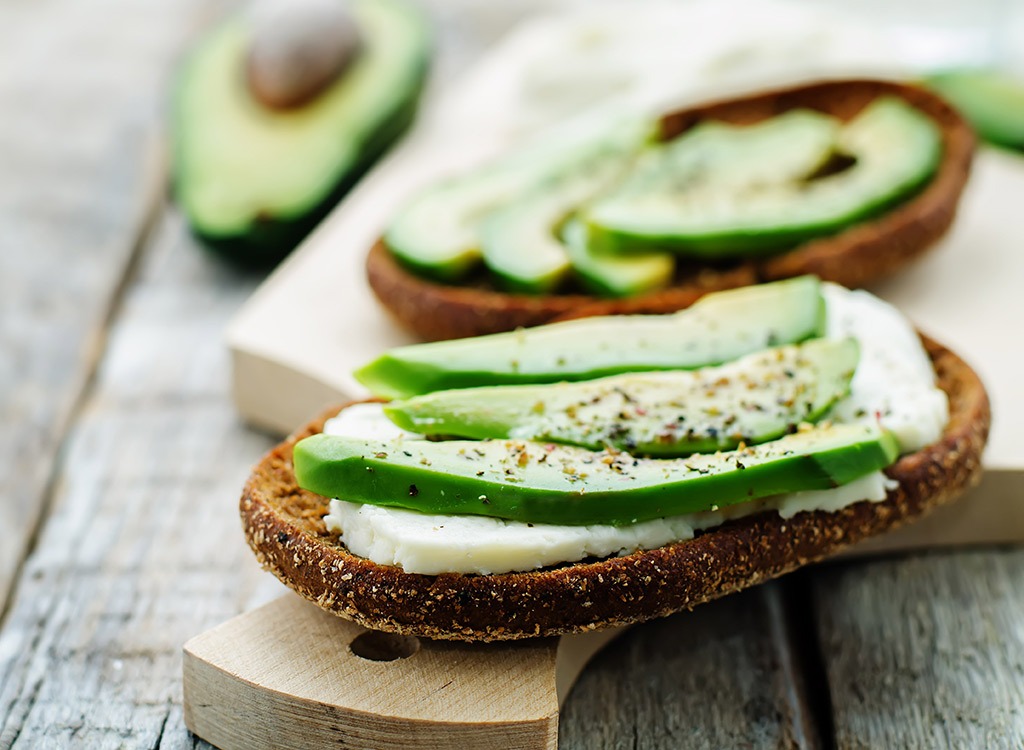
Potassium Payoff: 487 mg per half avocado (10.4% DV)
A bit of an overachiever in the health department, avocado is like the queen of the healthy fats parade. It’s the monounsaturated fat content of an avocado–20 grams per seeded fruit–that research suggests can help lower cholesterol, quell hunger pangs and even spot-reduce belly fat. In fact, a Centers for Disease Control survey found that people who reported eating half a medium-sized avocado on a daily basis had a lower BMI (body mass index) and smaller waist circumference, and also consumed significantly more fruits, vegetables, fiber and vitamin K. Avocado: the gateway drug to a healthier, leaner lifestyle.
Eat This! Tip: There are so many ways to enjoy avocado’s creamy goodness. As well as the obvious salad topper, consider swapping mayo for smashed avocado in your sandwiches, or adding a scoop of the mild fruit to your healthy smoothie for an extra luxurious texture.
Canned White Beans
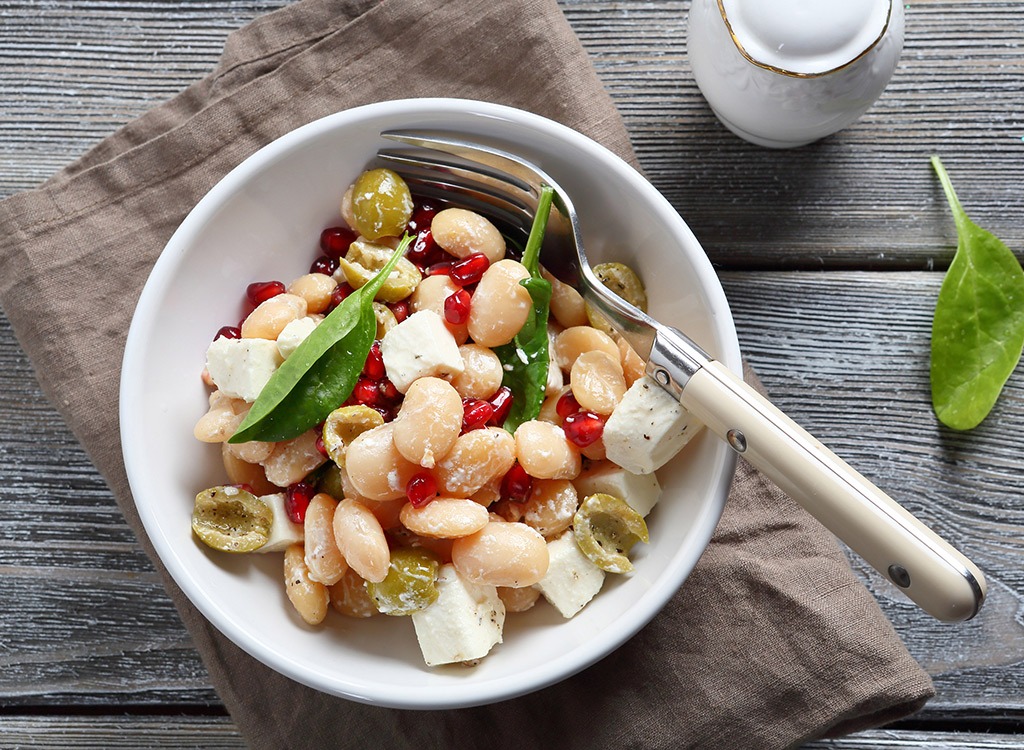
Potassium Payoff: 595 mg per 1/2 cup (12.7% DV)
Beans, beans aren’t just good for your heart. The inexpensive form of vegetarian protein and fiber is touted by health experts for its ability to reduce inflammation, lower cholesterol, promote fat metabolism and dampen appetites. White beans are a resistant starch, a slow-digesting fiber that triggers the release of acetate—a molecule in the gut that tells the brain when to stop eating. In fact, a systematic review of clinical trials on dietary pulses found that people who ate a daily serving of beans (about ¾ cup) felt an average 31 percent fuller compared to a control diet.
Eat This! Tip: Dried beans tend to be slightly higher in fiber and slightly lower on the glycemic index than canned. For convenience, though, canned varieties are usually fine and can help break down some of the gas-causing oligosaccharides; just check the label for additives like sugar, and rinse your beans thoroughly before enjoying.
Cooked Wild Atlantic Salmon
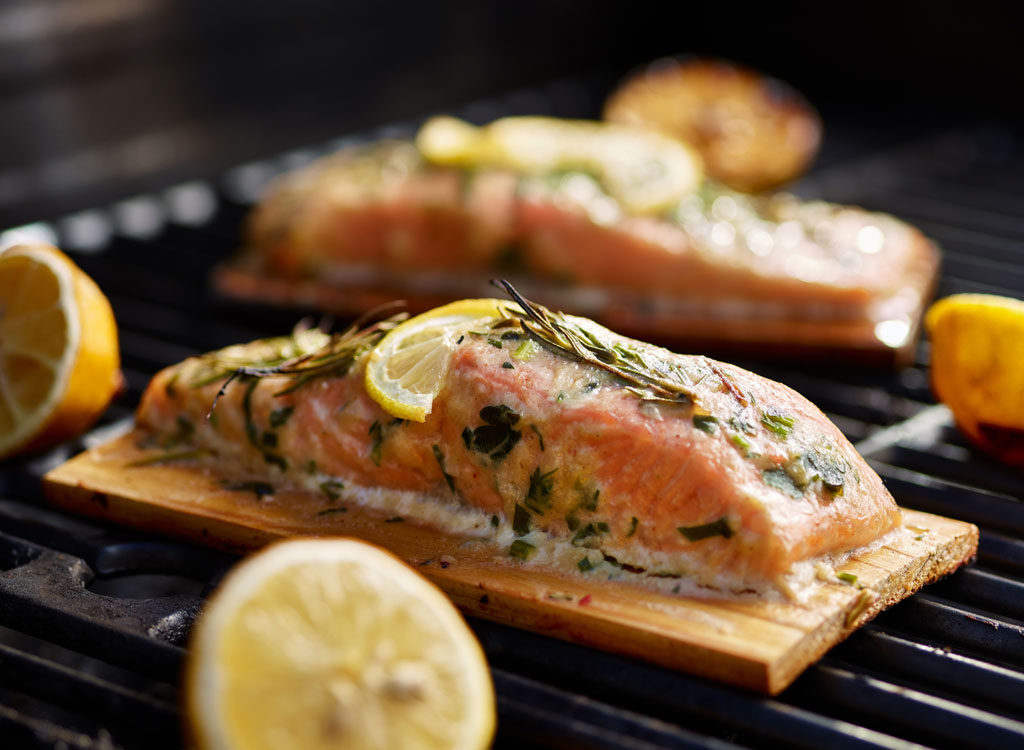
Potassium Payoff: 890 mg per 5-ounce fillet (18.9% DV)
Salmon may be high in fat, but studies suggest the oily fish may be one of the best for weight loss and cardiovascular health. In one study, participants were divided into groups and assigned one of three equi-caloric weight loss diets that included no seafood (the control group), lean white fish, or salmon. Everyone lost weight, but the salmon eaters had the lowest fasting insulin levels and a marked reduction in inflammation — a result the researchers attribute in part to salmon’s heart-protective omega-3 fatty acid content.
Eat This! Tip: Just two servings of salmon a week will help you meet the amount of heart-healthy omega-3 fatty acids recommended by the American Heart Association. Wild salmon is leaner than farmed, which is plumped up on fishmeal — and it has also proven to be significantly lower in cancer-linked PCBs. So go wild—literally!
This article was originally published July 16, 2015, and has since been updated to reflect changes in nutritional information.
